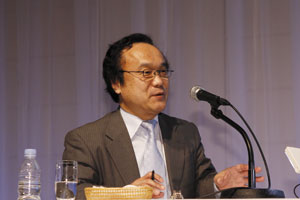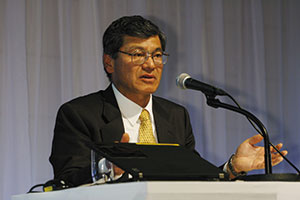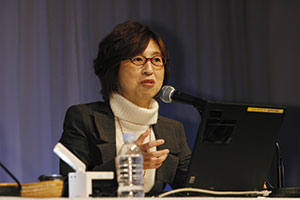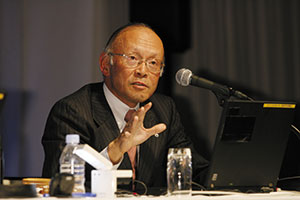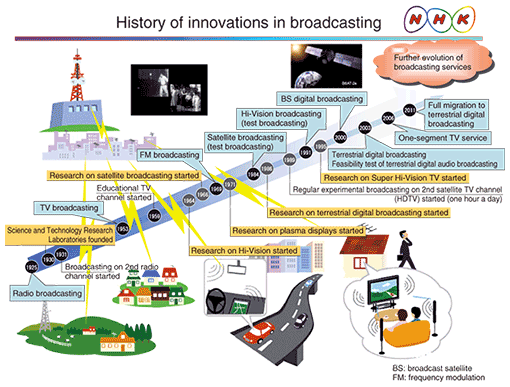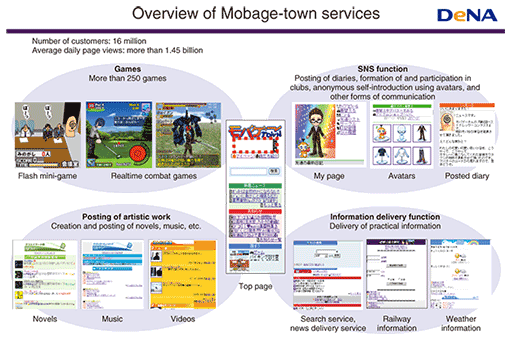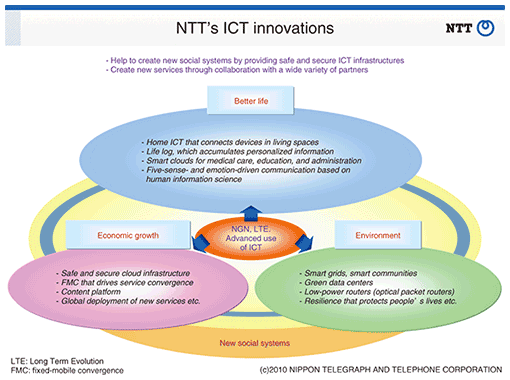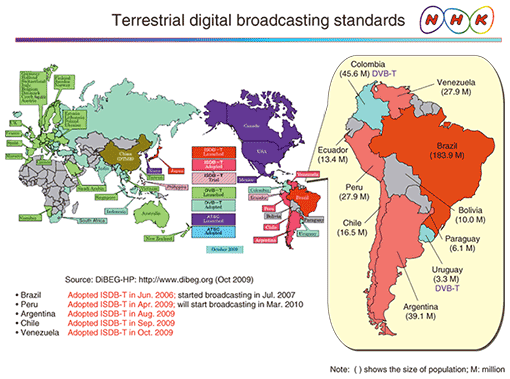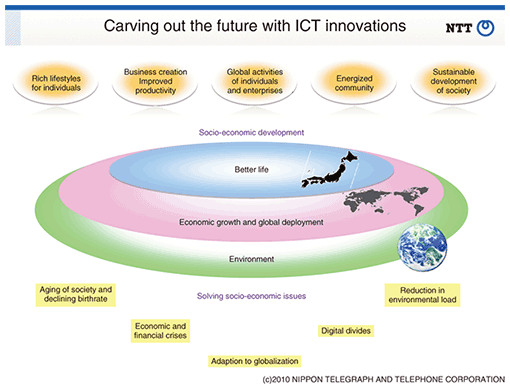 |
|||||||
|
|
|||||||
|
Special Feature: NTT R&D Forum 2010 Panel Discussion Vol. 8, No. 5, pp. 5–16, May 2010. https://doi.org/10.53829/ntr201005sf1 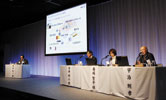 Carving out the Future with ICT Innovations––Creating New Services and Initiatives to Solve Social IssuesCoordinator:Panelists:AbstractDuring the NTT R&D Forum 2010, held on February 23–24, 2010, a panel discussion entitled “Carving out the Future with ICT Innovations” was held, in which Noritaka Uji, Senior Executive Vice President, participated as a panelist. This article reports on the discussions of the coordinator and panelists on themes such as “global deployment of ICT innovations to contribute to socio-economic development” and “activities to promote ICT innovation”.
1. IntroductionSekiguchi: Today, under the title “Carving out the Future with ICT Innovations”, we would like to discuss how we can improve both the Japanese economy and the global economy by exploiting information and communications technology, or ICT, and what we need to do to make that a reality. We are fortunate enough to have three panelists who are eminently qualified to discuss these issues. First, each panelist will make a brief presentation, and then we will have a panel discussion. 2. PresentationsHDTV technology has spread rapidly around the world.Nagai: Let me start by looking back at the history of broadcasting (Fig. 1). In Japan, radio broadcasting began in 1925, and television broadcasting in 1953. It took about 30 years for the world of audio to evolve into the world of visual media and then it took about another 50 years for digital broadcasting to emerge.
Right after the Tokyo Olympics in 1964, NHK Science and Technology Research Laboratories began research on Hi-Vision (an early analog high-definition television (HDTV) scheme), and in 1971, it began to study flat-screen TVs based on plasma technology. Many years passed before those research efforts together with the study of digital broadcasting culminated in the appearance of digital HDTV, which was adopted as a world standard. We take pride in the fact that the technical development undertaken over many years finally manifested itself in the world. HDTV will be followed by Super Hi-Vision, integral 3D TV, and 3-Screens.In response to demands for a sense of reality even greater than that provided by HDTV and for a large screen offering a field of view as broad as human vision, we have developed Super Hi-Vision (an ultrahigh-definition television format), which has 16 times as many pixels as HDTV. It was put on show at the Aichi Expo held in Nagoya in 2005; at NAB, the world’s largest exhibition of broadcasting equipment in the USA, in 2006; and at IBC, the largest show in Europe for such equipment, in 2008. At all those exhibitions, Super Hi-Vision attracted considerable attention and was highly rated. We will press forward with the development of Super Hi-Vision so that we can offer a visual experience with a high sense of reality to everyone in their homes together with 22.2-channel audio. Although Super Hi-Vision requires a huge amount of information to be transmitted, this should not be a problem because optical fiber networks are thought to have ample capacity to handle such high-volume transmission. There is a considerable interest in three-dimensional (3D) television. The current 3D systems are twin-lens systems, which use two cameras to produce a 3D image. Viewing a highly stereoscopic 3D video for a prolonged time causes eye strain and leaves the viewer feeling tired. To address this problem, NHK ceased its study on twin-lens 3D in 2003 and instead began studying integral 3D television, which provides a more natural image just as holography does. This 3D television technique requires about a hundred times as much information as Super Hi-Vision. As these examples indicate, NHK is undertaking research on providing highly realistic and non-fatiguing video, audio, and information to general viewing audiences. One of the latest topics attracting attention is the convergence between telecommunication and broadcasting. In its three-year business management plan started in 2009, NHK is promoting “3-Screens”. This term refers to the delivery of our content to three types of screen, namely, televisions, personal computers (PCs), and mobile terminals. We are stepping up our efforts in this area. With 1.5 billion page views per day, Mobage-town is having a major social impact.Namba: My company does business in the area of Internet and mobile services. The best known service we offer is Mobage-town, which is expanding its customer base among people in their 20s and 30s. In addition, we offer Pocket Affiliate, which is the world’s largest mobile advertising network, Bidders, which is a shopping mall, and Mobaoku, which is Japan’s largest mobile auction service. Among these, the one that has had the greatest impact on society is probably Mobage-town (Fig. 2). Mobage-town has four zones: games, SNS (social networking service), information delivery, and the posting of artistic work. In SNS, users can write diaries, ask questions or write answers in a Q&A (question-and-answer) forum, or participate in various group activities. With the average number of page views per day reaching about 1.5 billion, Mobage-town has become one of Japan’s largest websites accessed either by PCs or mobile phones. It specifically prevents users from participating in communities under their actual names and posting their profiles. Instead, users participate via avatars.
Mobage-town has had a great influence on teenagers: 72% of all 17-year-old males are Mobage-town users, and the figure for females of the same age is 60%. Recently, Mobage-town has become influential among younger teens, and there have been reports of youngsters getting into trouble through encounters they have had on its game sites. We have taken this seriously, and for the last two years we have been making strenuous efforts to enhance the soundness of our services. For example, the system controls the provision of services in real time according to the user’s age group, and the service control by our customer support team has been made more stringent. Thanks to these measures, the number of cases related to Mobage-town that the police have investigated has declined sharply over the last two years. Bringing Japan’s superb mobile culture to the worldAlthough the negative aspects of these services tend to be emphasized in the mass media, as a whole, these services encourage great communication. For example, a dejected boy posted, “I cannot agree with the management policy of my club in school. I am thinking of quitting the club.” Someone encouraged him, saying “Why don’t all the club members talk with the teacher who oversees the club?” Later, the boy thanked that person for this advice, saying “Today, we plucked up enough courage to talk to the teacher. We are glad that we were able to reach a mutual understanding.” Another excellent feature of our service is a forum where users can express themselves by posting their work. Today, 600,000 novels authored by ordinary people are available in the forum. In addition, 30,000 works of music have been posted. Users post music they have composed and played, and fans download them. I think it is great to have the opportunity to publicize one’s creations and get feedback from the audience. Currently, we are focusing our energies on strengthening social games, which are rapidly gaining in popularity. A social game combines a game and communication. Participants play a game as they communicate with other participants. We are also working to expand our social games and Mobage-town globally. Japan certainly has a great mobile culture. I doubt that this culture will have any difficulty in being accepted worldwide. Although DeNA is currently a Japanese site, we will do everything we can to make it a well-established global one within five years. Video, clouds, and Home ICT are important areas for service creation.Uji: With a view to becoming a service creation group, the NTT Group has been building infrastructures, such as the NGN (Next Generation Network), optical access networks, and mobile networks, and we are collaborating with various enterprises to create services on these infrastructures. There are three important areas for service creation: video services, software as a service (SaaS) and other types of cloud computing, and Home ICT. Services that are ideally placed to reap benefits from broadband networks are naturally video services. In addition to the NHK on-demand service and HD video services in the consumer market, there is digital signage, in which the scene to be displayed is selected according to the time of day, location, and weather, and videoconferencing that brings a high sense of reality to business interactions. HD video can also play a very useful role in the fields of education and medical care. Cloud computing is expected to play an important role in promoting teleworking, combating environmental problems, enabling thin-client systems in which a variety of databases are installed in clouds, and e-administration—an area where Japan lags behind other countries. Although some people are concerned about the security of cloud computing for business applications, we believe that the NGN will provide a solution to such concerns. It is possible to conceive of a service in which a Home ICT system allows the user at home to control security, healthcare, and energy-saving features by operating via a window shown on a display. This is sometimes called the 4th screen because it developed after the emergence of the screens used for TVs, PCs, and mobile phones. By standardizing the specifications of home gateways and service gateways, we can make Home ICT universally applicable to the home appliances of any vendor, to houses of any construction company, and to any utility company. Using the power of ICT to solve social issues and drive socio-economic developmentSocial issues currently confronting Japan include the decline of its economic and ICT competitiveness with its fall to 17th place in the world. Although it is true that Japan leads the world in infrastructures, such as broadband, Japan lags behind in the use of ICT, particularly in the areas of medical care, education, and administrative services. ICT should penetrate more deeply into everyday life and the economy and in the area of environmental protection. When we speak of an ICT strategy, it should not be solely the strategy of a telecommunications carrier or a computer vendor. Rather, it needs to be a total strategy involving ICT users. Let me introduce the activities of the NTT Group in these areas (Fig. 3).
In seeking a better life, we regard Home ICT and life logs as mechanisms for strengthening the bonds between people or between family members and are working to provide more personal and more natural communication. In the area of the economy, we believe that we have entered the age of cloud computing. In addition to providing safe and secure clouds, we are focusing on digital distribution of content, as typified by e-books on Amazon’s Kindle. For example, the NTT Group has a huge amount of map data. We are thinking of new applications that fully exploit this data. The entire NTT Group is engaged in activities that contribute to environmental protection, such as smart grids, green data centers, and visual presentation of energy consumption. So, my message here is “Let’s use the power of ICT to solve social issues and drive socio-economic development.” 3. DiscussionGlobal deployment of Japanese technologies to drive socio-economic developmentSekiguchi: Let us now move onto the discussion. It is often pointed out that, even if leading-edge services and infrastructures have been well developed in Japan, they are confined to within the country’s borders and rarely deployed overseas, and as a result, Japan fails to assert a presence in the world commensurate with its achievements. So, I would like to start with a discussion of how Japan can boost its international competitiveness; in other words, how it can expand its technologies overseas. I find it good news that many South American countries have chosen Japan’s terrestrial digital broadcasting standard. Mr. Nagai, would you tell us about NHK’s activities that led to the Japanese standard being chosen? The experience with terrestrial digital broadcasting proves that good technologies are bound to be accepted overseas.Nagai: Japan’s terrestrial digital broadcasting standard has been adopted in Brazil, Peru, Argentina, Chile, and Venezuela (Fig. 4).
The USA was the first to decide on its digital broadcasting standard, followed by Europe. Fortunately or unfortunately, Japan was the last to do so. Therefore, the Japanese standard was able to combine various leading-edge technologies. As a result, it achieves high reception sensitivity in a mobile environment and can broadcast one-segment signals along with ordinary digital broadcasting signals from a single transmitter. These advantages are important factors that have led to the adoption of the Japanese standard by many South American countries. Since Japan has excellent technologies in this field, I expect that the Japanese standard will be adopted in other regions as well. For example, Brazil is working hard to sell the Japanese standard in Africa. We are also studying the possibility of gaining a foothold in Asia. Let me add that the government’s dedicated approach to South American countries has been vital to winning wide acceptance of the Japanese standard in that region. The mobile service industry now faces a great opportunity for global expansion.Sekiguchi: Ms. Namba, you mentioned global expansion. The expansion of Japanese mobile technology into overseas markets has been slow. Why do you think the Japanese mobile industry failed in this way? Namba: Japan’s mobile phone market is often derisively likened to the “Galapagos islands” because it is unique and isolated from the rest of the world. My company considered venturing into the world market but found that both mobile terminal vendors and service providers had suffered almost total defeat. The size of the Japanese market is about 100 million people, while that of the world is 4 billion. It is only natural that the Japanese mobile industry, which has been highly successful in the cutting-edge Japanese market, wants to enter the world market with 4 billion potential customers. The industry made a valiant effort to enter the market but found, to its dismay, that there was not a single unified market of 4 billion people, as shown in Fig. 5. Languages, the concept of copyright protection, and the governing laws differ greatly from one country to another. It is necessary to create a different service for each country. In addition, there are differences in terminal specifications among vendors, differences in services among carriers, and differences in technology among mobile system generations, which have all fragmented the market of 4 billion into smaller pieces. Within Japan, the differences between the services of NTT DOCOMO, au, and SoftBank are so small that vendors can target their products at the entire population of 100 million mobile users. Once outside Japan, the situation is completely different. So, I would say that Japanese vendors have not failed to be competitive but simply have not found any attractive markets out there.
The advent of the iPhone has given rise to a sharp increase in global mobile traffic. The iPhone’s specifications have not been dictated by any one country or carrier: they are the specifications of a single vendor. This means that the iPhone has found a way to negotiate its way through the bottleneck represented by fragmented markets. So, today the mobile industry faces a great opportunity. The overseas market has now reached a size that is significant for Japanese vendors. One-segment TV is an effective weapon for global expansion.Sekiguchi: I hear that Japan’s terrestrial digital broadcasting standard has successfully entered the South American market thanks to its ability to broadcast one-segment TV for mobile phones. In contrast, in the field of mobile phones, the iPhone and BlackBerry have made inroads into the Japanese market. Overseas terminal vendors and service providers have seized a good portion of the market that the Japanese industry has strenuously developed over many years. NHK has started to make its NHK World TV viewable on iPhones as well, but some people point out that one-segment TV technology, which was created in Japan, has shackled Japanese terminal vendors in their efforts to expand their business overseas. This means that no matter how good a new technology is, it may become a milestone unless it is brought to the world market and new service models are built around it as quickly as possible. Mr. Nagai, what do you think about this problem? Nagai: On the contrary, I think that one-segment TV can become an effective weapon for Japanese vendors in their endeavors to expand their business overseas. Developing countries have a considerable number of people who cannot afford digital TVs. If one-segment TV is available, they can watch TV programs on their mobile phones. Since its quality can be enhanced, I think that one-segment TV has a bright future. So, one-segment TV will probably be a feature that gives Japanese vendors a competitive edge as they sell their mobile phones in the world market. For penetration into the world market, it is important not only to achieve international standardization of Japanese technologies, but also to promote them on the basis of their track record in Japan.Sekiguchi: The technologies that enable individuals to broadcast videos, such as YouTube, have come to Japan. They rely on Japan’s well-established telecommunications infrastructure of an optical fiber network. This broadband network was introduced in Japan long before any similar networks were built overseas. I believe that it is necessary to accelerate the implementation of video delivery platforms on this infrastructure. Mr. Uji, what is your view? Uji: There are many services and solutions that can be effectively provided on an optical fiber network. For example, IPTV (Internet protocol television) was standardized and is provided through the collaboration of NTT Laboratories, Japanese TV vendors, and Japanese TV broadcasting stations, including NHK. This is a very successful example. However, standardization is tricky. Japanese technologies have been successfully adopted as international standards in most cases, but being adopted as an international standard is one thing and being widely accepted is quite another. It takes a great effort to have a technology adopted as an international standard but it takes even greater effort to have the standard widely accepted. We are now having discussions with the aim of getting the Japanese IPTV used in many countries in Asia and other regions. To win acceptance for a technology, we must show its track record in Japan and also form alliances with many enterprises. If Japan succeeds in creating solutions to social problems, I think they are quite likely to be adopted and introduced as new social systems overseas. How to protect copyrightsSekiguchi: Even if you have created a good technology, you cannot assume that it will be instantly accepted overseas. You must use it domestically and produce examples of its successful implementation and operation. From this viewpoint, Japan has three frequently cited problems. The first is the result of the so-called Galapagos syndrome. Just because ours is a high-end technology, it is not readily accepted overseas. The second is that the Japanese have become overly sensitive to the disclosure of personal information since the Personal Information Protection Law was enacted in 2003. The unfortunate end result is a general stagnation of information flow. The third is a tendency toward overprotection of copyrights. As a player in the media industry, we naturally believe that it is important to protect copyrights. However, the fact is that too much emphasis has been given to copyright protection and this has been impeding the convergence between telecommunication and broadcasting. How should Japan solve these problems? Laws governing copyright protection should be revised by digital natives.Namba: I think that a great bottleneck we face is the fact that policymakers in Japan are not digital natives. As people who were born before digital technologies appeared on the scene, they fear whatever they cannot understand and consequently overreact when they come in for even some minor criticism on the Internet. I myself am sometimes criticized, but the Internet is like that. It is a world where you gain respect if you listen and respond to both good and bad opinions sincerely instead of being overly sensitive to them. I think the best solution is to entrust digital natives and mobile natives with the task of proposing what kinds of copyright-protection laws, viewing-rights protection, and personal-information protection would make them feel most at home in their digital world. Japan has gone to the extreme in restricting things that are potentially dangerous. In spite of the fact that Japan is now one step ahead of the world in terms of mobile services, I fear that the current crop of children in Japan may find themselves left behind in the medium-to-long term. The greatest bottleneck in distributing TV programs on the Internet is the difficulty in clearing copyright hurdles.Sekiguchi: It has become possible to view the Olympic Games by accessing the NHK on-demand service. Personally, I subscribed to this service as soon as I could. I wonder why such services are slow to take off in Japan. Nagai: The NHK on-demand service is experiencing great difficulty in resolving copyright issues. There is no legal issue involved in producing and broadcasting a TV program or even rebroadcasting it. However, the moment you want to broadcast a TV program on the Internet, you encounter a stack of copyright issues that must be dealt with. NHK’s longstanding year-end program “Red and White Singing Contest” was broadcast on the Internet for the first time last year. Achieving that was a long and tortuous process. NHK staff had to work tenaciously to get agreements from everyone involved in the program. About one-third of the cost of providing the NHK on-demand service is the expense of handling copyright issues. For example, if you want to broadcast an old TV program on the Internet, you must find every person who appeared in it and get his or her approval before rebroadcasting it. Many say that NHK should provide a service that makes its enormous stock of archives easily accessible, but when it comes to providing them on the Internet, the copyright issues stand in the way. We believe that in producing new programs, we should anticipate that they might be broadcast on the Internet in the future and resolve copyright issues in advance. Reforming the organizational framework is more important than technology in promoting e-administration.Sekiguchi: It was pointed out earlier that Japan is lagging behind in the implementation of electronic medical records and electronic applications for administrative processes. We have the technologies we need to do this already. Just what is needed to make progress in these fields? Uji: Some of the main reasons for the delay in Japan are the vertically segmented administrative functions in the government sector and the various regulations in place. We do believe that e-administration should make more progress, and the NTT Group wants to raise its voice in appealing for faster implementation. Last year I visited Korea. I found that the degree of penetration of the optical fiber network is the same as in Japan but when it comes to the level of services available, Korea far surpasses this country. When I said to Americans that Japan has difficulty in adopting social security numbers, they were visibly surprised. At one time, this issue was discussed under the unfortunate name of “identification numbers for everyone”. The misnomer raised a lot of public suspicion and disquiet. It is good news that today there are sound arguments supporting the need to assign identification numbers to everyone. From the perspective of users, it is important for there to be a clear statement of how this number will be technically protected and how it will be used. If we cannot advance this identification number system, it will be due not to technical obstacles but to inappropriate organizational mechanisms or the manner in which the system is promoted. For example, the percentage of people filing their tax returns online has reached 30% compared with 18% in the previous year. This was partially thanks to incentives given to online applicants. One incentive is a one-time deduction of 5000 yen. Another is the convenience of not being required to attach receipts from medical institutions to the tax form when applying for a tax deduction for medical expenses. Activities to bring about ICT innovationsSekiguchi: Let me ask one final question. The Japanese market is relatively large in global terms and Japanese companies have been able to do decent business in that market. However, as Japan’s population continues to age and dwindle as a result of a declining birthrate, it is necessary to adopt a fresh economic strategy that is different from those in the past, such as increasing per-capita productivity and gross domestic product (GDP). The new Administration announced a new growth strategy that aims to increase the average nominal growth rate by 3% and to raise the GDP to 650 trillion yen by 2020. I believe that ICT should serve as a powerful engine to drive this initiative. Without ICT, it would be impossible to reach these goals. So, I would like to invite you to put forward constructive suggestions for the new Administration before we close this panel discussion. Japan should have a mechanism for attracting gifted persons from around the world.Namba: I think that regulations reflecting a somewhat hysterical attitude are very dangerous. If there is one thing I want to propose to the current Administration, it is that we should build a mechanism for attracting gifted persons from around the world even though Japan may not be able to copy the success of Silicon Valley. The Japanese government, almost by nature I would say, tends to adopt policies that are focused only on the Japanese people. If we are to boost the status of Tokyo or Japan as a site of intellectual innovation, we must make it easy for creative leaders and business leaders from around the world, in fact, their entire ecosystems, to come to Tokyo and do business. Unless we can form multinational teams and go on the offensive in the world with such teams, Japan’s business activities will never expand in scope. It is about time that Japan started a serious effort to attract talented individuals from around the world to Tokyo, learning from Singapore’s initiative to attract gifted persons. Developing leading-edge technologies as Team JapanNagai: The next goal in the field of broadcasting is wide deployment of Super Hi-Vision TV. Our target year is 2020. People in NHK refer to this year as twenty-twenty even in Japanese. We plan to start test broadcasting and then experimental broadcasting of Super Hi-Vision TV by 2020. We are hoping to develop leading-edge technologies as Team Japan, involving everyone in the nation who has a contribution to make in this area. In the course of reaching that goal, we would like to take full advantage of the high-quality broadband environment already available in Japan so that more and more high-definition content will be circulated in that environment. Hidden behind this initiative is our apprehension that overseas products and enterprises may make inroads into this country and snatch Japan’s entire Internet market. The British public broadcasting station, BBC, is also trying to capture the world market with its iPlayer, an on-demand service that lets users view TV programs that were broadcast in the previous seven days. It has also launched an IPTV service, called Project Canvas, to connect home TVs to the Internet. In Japan, the IPTV Forum has been studying various mechanisms and aims to implement them as soon as possible. The national government must study ways to fully exploit ICT.Uji: We have talked about global expansion of Japan’s ICT. To achieve this, it is first necessary for the national government to adopt policies that take into consideration both domestic and global influences (Fig. 6). Second, since ICT can cut across many boundaries, the government should study how to fully exploit ICT throughout this country. Communication can take place not only between people but also between a person and a machine and between objects. Data transmitted from sensors can be used to manage the growth of agricultural products. ICT, including the use of RFID (radio frequency identification) tags, can impact many aspects of our lives. I think that it is extremely important that the growth strategy of the national government cover ICT strategies, including a Home ICT strategy that, for example, aims to clearly visualize the energy consumed by home appliances. This is something that should be considered at the national level. In addition, I believe that the media have an important role to play in creating a general atmosphere in which people will be encouraged to take an interest in the effective use of ICT.
Sekiguchi: I remember that, in 2005 or 2006, the Ministry of Internal Affairs and Communications held a Minister’s Commission on Convergence of Telecommunication and Broadcasting. At that time, the term the first year of complete digitization was coined and used. What it implied was that TV broadcasting would migrate to digital broadcasting (which will be completed in 2011), that the optical fiber network had reached the stage of covering the entire country, and that a paradigm shift was about to take place. It was found necessary to set up a new legal framework, and today the Ministry of Internal Affairs and Communications is developing a Law on the Convergence of Telecommunication and Broadcasting. It is time that we freed ourselves from conventional wisdom and customs and created new mechanisms. Now I would like to close this discussion and ask the audience to give our three distinguished panelists a big round of applause. References
Profiles of the coordinator and panelistsWaichi SekiguchiEditorial Writer, Nikkei Inc. [1] Member of the “ICT Policy Taskforce” sponsored by the Ministry of Internal Affairs and Communication. Member of the “Expert Committee Focusing on the Exploitation of Digital Technology” sponsored by the IT Strategy Headquarters, Cabinet Office. Kenji NagaiGeneral Managing Director and Executive Director-General of Engineering, NHK (Japan Broadcasting Corporation) [2] Former positions include President and CEO of Broadcasting Satellite System Corporation, Director of the Engineering Administration Department, Director of Transmission Technology Center within the Engineering Administration Department. Tomoko NambaChief Executive Officer, DeNA Co., Ltd. [3] Member of “Study Group on Strengthening International Competitiveness” of the “Taskforce on ICT Policies in the Age of Globalization” sponsored by the Ministry of Internal Affairs and Communications. * The photographs and materials of the coordinator and panelists are used in this article with their permission. It is strictly prohibited to reproduce, reprint, or disclose to any third party the photos and materials included in this article without permission. |
|||||||








